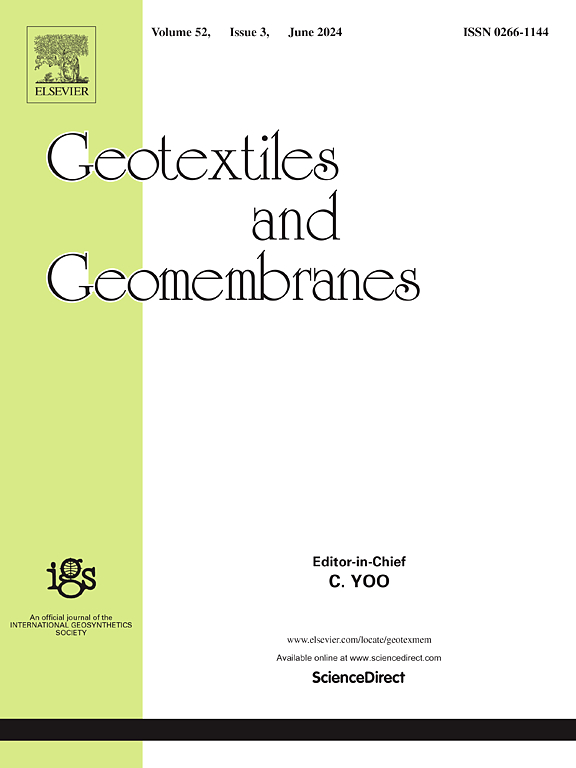排水板直径系数对水平排水-真空预压结合土工膜袋处理污泥影响的实验分析
IF 6.2
1区 工程技术
Q1 ENGINEERING, GEOLOGICAL
引用次数: 0
摘要
在水平排水板真空预压与密封土工膜袋组合方法中,水平排水板作为唯一的排水通道,其直径系数对确定合适的填充高度至关重要。基于垂直排水板的理论模型,分析了密封土工膜袋法对水平排水板的影响范围。模型试验表明,水平排水板的最大影响直径系数在24.6 ~ 25.3之间。参考垂直排水管通常使用的最小影响直径系数,建议密封土工膜袋装水平排水板的适用范围为15.0 ~ 25.3。结果还表明,由于重力辅助下向流动,上层浆体比下层浆体排水效率更高。相反,下部区域向上排水效果较差。在底部添加排水板可以创造直接的流动路径,并改善下部区域的固结。为了减少测试过程中的堵塞,将排水板嵌入土工布中,在一定程度上减少了堵塞。然而,由于堵塞在实践中是难以避免的,所提出的系数并没有考虑其影响。本文章由计算机程序翻译,如有差异,请以英文原文为准。
Experimental analysis of the influence of drainage board diameter coefficient on sludge treatment combining horizontal drain-vacuum preloading with geomembrane bags
In the combined method of horizontal drainage board vacuum preloading and sealed geomembrane bags, the horizontal drainage board serves as the sole drainage channel, making its diameter coefficient critical in determining the appropriate filling height. Based on the theoretical model for vertical drainage boards, this study analyzes the influence range of a horizontal drainage board using the sealed geomembrane bag method. Model tests show that the maximum influence diameter coefficient of the horizontal drainage board lies between 24.6 and 25.3. By referencing the minimum influence diameter coefficient typically used for vertical drains, the applicable range for horizontal drainage boards in sealed geomembrane bags is suggested to be 15.0 to 25.3. Results also reveal that the upper slurry layer drains more efficiently than the lower layer due to gravity-assisted downward flow. In contrast, upward drainage in the lower zone is less effective. Adding a drainage board at the bottom creates a direct flow path and improves consolidation in the lower zone. To mitigate clogging during testing, the drainage board was embedded in geotextile, which reduced clogging to some extent. However, as clogging is difficult to avoid in practice, the proposed coefficient does not account for its effects.
求助全文
通过发布文献求助,成功后即可免费获取论文全文。
去求助
来源期刊

Geotextiles and Geomembranes
地学-地球科学综合
CiteScore
9.50
自引率
21.20%
发文量
111
审稿时长
59 days
期刊介绍:
The range of products and their applications has expanded rapidly over the last decade with geotextiles and geomembranes being specified world wide. This rapid growth is paralleled by a virtual explosion of technology. Current reference books and even manufacturers' sponsored publications tend to date very quickly and the need for a vehicle to bring together and discuss the growing body of technology now available has become evident.
Geotextiles and Geomembranes fills this need and provides a forum for the dissemination of information amongst research workers, designers, users and manufacturers. By providing a growing fund of information the journal increases general awareness, prompts further research and assists in the establishment of international codes and regulations.
 求助内容:
求助内容: 应助结果提醒方式:
应助结果提醒方式:


